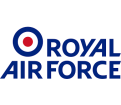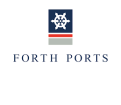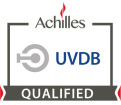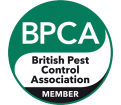
Call 0333 567 2020 for advice and quotes or contact us online

Preventing Ground Nesting Birds for Construction Company
Gallery
Supporting Nesting Bird Management
Our clients construction operations required them to meet the following criteria;
- To prevent nesting birds from having an adverse effect on operations on site, in particular the LRP, as these are listed on Schedule 1 of the Wildlife and Countryside Act 1981 and therefore offered additional protection from disturbance.
- To encourage birds to nest in safe environments away from the site where they are more likely to nest successfully to avoid impacting populations.
- To avoid unnecessary delay to the project.
- To ensure no laws are broken as contained within the Wildlife and Countryside Act 1981.
The project faced challenges in that the South Portal had several areas that provided a suitable environment (bare, stony ground with nearby standing water) for the LRP to nest. The site was known to attract nesting birds, in particular the LRP. This was of great concern for the following reasons:
- Schedule 1 listed and therefore protected from disturbance and awarded Special Penalties all year round. 2. LRP have a certain tolerance of traffic as previously experienced, even though there was traffic onsite, LRP managed to still nest.
- Can be active at night.
- Do not build a nest but create a scrape so can lay very quickly.
- Attracted to nest in areas with a stone surface.
The site provided a suitable habitat for LRP to nest as they were able to have full vision for any potential predators. The lack of vegetation on site and various ponds in this area (food source for birds) made it the perfect environment for these birds to settle.
Our Solution
A bird control program of falconry and working dogs included the use of non-hunting, non-lethal falcons to provide an aerial deterrent and working dogs to provide a ground deterrent. Unlike visual or mechanical devices, wild prospecting birds do not habituate to the presence of a live falcon or working dogs.
NBC’s methods have been proven to be natural and effective in encouraging birds to nest in alternative locations without the need to catch the prey, making it acceptable to the public, regulatory authorities, and interest groups.
The following methodology was incorporated into the program:
- The NBC operative DID NOT fly the falcon in a targeted manner. i.e., to catch a wild bird or a falcon. One technique that we used to achieve this relies upon the technician first lifting any ground birds into flight using the trained dogs and/or human disturbance. This provides the birds with an aerial advantage over the falcon. Only then is a bird of prey flown to disperse the target species from the site.
- Dogs were regularly run over approved parts of the site to prevent birds from settling and initiating any nesting behavior. Dogs were not run and birds were not flown over any diverse habitats.
- For a sensitive project of this type, we assigned birds of prey which have been captive, bred and trained specifically for bird control with no history of killing other birds – i.e., they are trained and focused on the technician as providing them with the food reward.
- The regular presence of a falcon is perceived as a threat by the birds and encourages them to look for more desirable sites elsewhere.
- All the birds of prey were flown at their correct weight to further control any instinct for hunting for their own food.
- All birds of prey assigned to the program were fit and in excellent feather condition. This is very important for the welfare of a bird of prey.
NBC has an abundance of experience and a high rate of success on ground nest projects and we provided an auditable report system to ensure the programme remained effective. The introduction of a dispersal and disruption program using our recommended measures to discourage the Little Ring Plovers from nesting onsite, proved a great success and ensured the project continued running smoothly without any disturbance related to ground nesting bird activity.
Find out more about our Nesting Bird Mitigation
Read our informative article What is Hawking Pest Control































